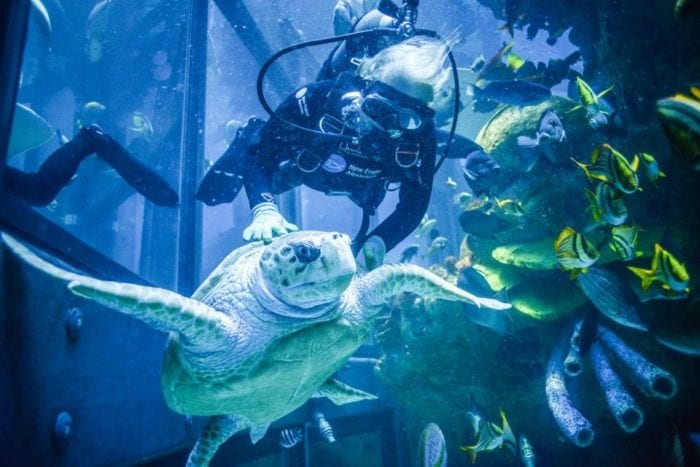
“We had to learn how to adapt to the situation, and we needed to learn fast.”
On July 16, the old North Church and Historic Site reopened for limited operations after several months of closure due to the pandemic. In the first two weeks, they welcomed “on average, 50-60 visitors per day.”
That was a lot less than the roughly 750 people they’d see on a typical day before COVID; nevertheless, after discovering that “the majority of visitors” were “traveling to Boston from high risk areas,” on July 27, “the Old North Foundation Board of Directors made the difficult decision to suspend on-site programming and reduce staffing to protect our limited resources.”
They’re not the only attraction devastated by the pandemic. Among the wounded: the Paul Revere Memorial Association, the New England Aquarium, and every other place that relies on tourist foot traffic.
 “Everything was moving so quickly, it was a challenge to keep up,” said Emily Benoit, digital marketing associate at Old North Church. “Each day brought new information about the outbreak, and advice for institutions to help mitigate the spread of the virus throughout Boston and Massachusetts as a whole.”
“Everything was moving so quickly, it was a challenge to keep up,” said Emily Benoit, digital marketing associate at Old North Church. “Each day brought new information about the outbreak, and advice for institutions to help mitigate the spread of the virus throughout Boston and Massachusetts as a whole.”
The site went from operating with “an abundance of caution” to completely closing down the site in the span of 48 hours.
“We had to learn how to adapt to the situation, and we needed to learn fast,” Benoit continued. “Four months of closure illustrated the need to diversify our business model. We were closed during four of our busiest months and the current flow of visitors cannot sustain our operations.”
The museum is now preparing to launch a strategic planning process, and has a virtual tour in production. Until then, history buffs can scratch their itch with their mini-courses, as well as a new online game, “Two If By Sea,” which recruits players as detectives to solve a Paul Revere-involved mystery.
Several museums have expanded virtual programming. The Paul Revere Memorial Association reopened to the public in July, but is also going hard online with podcasts and other digital attractions. According to Executive Director Nina Zannieri, they “have to cope with the immediate moment while still planning for the future.”
At the New England Aquarium, a much larger operation, administrators opened the doors in mid-July, admitting only 15% of the building’s official capacity (that’s about 1,200 tickets on a good pandemic day). In normal times, ticket sales and events support about 80% of the aquarium’s monthly expenses, much of which go to caring for the approximately 80,000 animals in its care.
To stay above water, adjustments have “involved non-labor and labor expense reductions, including layoffs, furloughs, and reduced work schedules for a significant portion of our full- and part-time staff,” an aquarium spokesperson said. It’s not all bad news on the ocean front though …
“We saw very little change in the animals’ behavior after closure,” they added, “possibly because staff continued to be on-site every day, caring for them and making sure they were engaging in their usual enrichment activities.”
Nyadenya is a photojournalist and reporter from Boston who enjoys writing and illustrating comics.

